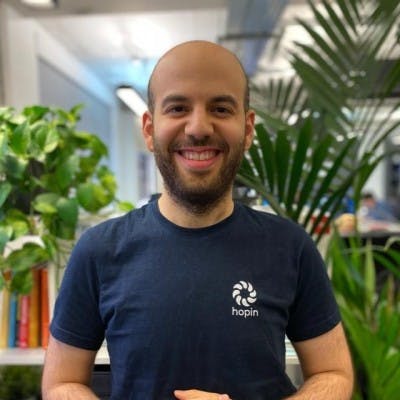Season 7 - Episode 2
Designing Time in a Remote World by MURAL CEO
Mariano Suarez-Battan, Co-Founder and CEO of MURAL, walks us through the origins of MURAL, from ideation to its “ten-year overnight success”. He also touches on the importance of imagination, and how companies can encourage their teams to embrace digital collaboration.

“How did you come up with MURAL? What was the problem that you first set out to solve?”
Ten years ago (we’re going through our ten-year anniversary, which makes you humble, these things take a lot of time!) we bought a video games company that we [then] sold to a company called Playdom, and then to Disney. So we were working for Disney.
We had a social game on Facebook. We had like 1 million players per month, it was super popular. So I had to design a new game, and I wanted it to be a game about emotions or colors. The game would change depending on how people were feeling and expressing their feelings on social media.
I was using a PowerPoint deck to easily collect stuff on characters and storyline and mechanics and so forth because I was flying back and forth from Argentina to the Bay Area and I needed something to have some portability on my ideas and to share them around. Way back when there were not as many options.
And I realized that where I was sharing a Work In Progress with people, with no structure, and I was going through slides forwards and backward. And we were confused…I was also confused.
And the other thing is that when I was opening PowerPoint and showing it, people were expecting something final, or you [something ready to be evaluated]. They were saying, no, your ideas are mediocre, instead of co-creating shoulder to shoulder, like I had experienced inside a room with a whiteboard, which feels more like a draft, and more approachable. It’s not permanent. It’s not version 1.0. It’s in progress, right? So that was the original insight.
When we started, I made a very bad decision to make it very horizontal, very open-ended instead of focusing on…The only advice that I give early-stage entrepreneurs right now is, who are your 10 happy customers? That’s all you should care about at the beginning. Instead, I had like a million people per day, and my ego was big. This is for everyone! And no, it might be eventually for everyone, but right now, or back then, not really.
So we had to struggle. It’s like the market wasn’t there, putting aside remote work for a second, right? So that’s everyone now through the pandemic, remote or digital-first collaboration…we had the whole world go like that.
The interesting thing is that we support those that have a type of remote work, which is like the core innovation and strategy planning, reflection, team-building…so things that are like cognitively challenging and would generally happen altogether inside a project room in customer engagements.
So what we’ve seen in the last 10 years, and Product School is one example of this, there’s been an improvement and know-how, in frameworks, visual frameworks, to help you think and to collaborate. 10 years ago, people knew what a P&L was, right? But not so much what are business model designs or customer journey maps, or prioritization grids that help us operate as innovators. So that’s how we grew this thing.
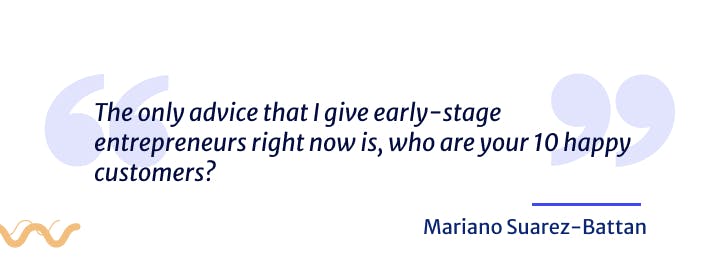
“Who were your early adopters, the people who found value right at the very beginning before the whole world went reamote?”
So I always tell this story to new people that we hire. At the beginning, we made a bad decision that we let it be everything. So we’ve had a lot of consumery type use cases, right? Trip planning, or home refurbishing or I don’t know, some scrapbooking.
And we saw usage go high, and then kaboom. Dropped.
Then we saw certain groups staying, and there was frequent collaboration. In particular, this group from Steelcase, the furniture company. And another, which was focusing on solutions for the workplace. So we saw them in our stats, and we reached out to them to understand better. And we realized that they were not just taking advantage of the open space that the whiteboard provides, but they were adding some methodology to it.
They were not just randomly adding thoughts. They were constructing a journey map. They were putting some prioritization. They were synthesizing user research. So they were, they were using it for the methodology and not for the malleability of the whiteboard. They were not drawing pictures of cats, they were building frameworks.
So alignment diagrams help them understand or share ideas with each other. And they were following a procedure. So then we said, okay, we need to be four teams that care about the same thing. That’s what we learned, but way back when. So that was the first zoom-in, right? So teams, yes, need a whiteboard. But in a particular practice, some form of structure and methodology.
Immediately after that, like three months later, we got an introduction from Tim Brown, former CEO at IDEO to Phil Gilbert, now former General Manager for Design at IBM. And design groups in some companies are in charge of bringing in designers, teaching them the way of product management, but also helping the rest of the company remove the antibodies for good product design, embrace design, understand how a designer thinks and works, and so forth.
We talk about imagination a lot, right? Because we believe that anybody that has a brain uses imagination. They might forget at school, they might forget at work, but this colorful, powerful thing that we have here allows us to see the world in a new way. And then we can take action to do something about it, but imagination is needed and visualization to then go and do creation, so actually building a thing, it could be physical, it could be UI, but that’s where the collaboration between business people, product people, and designers should happen.
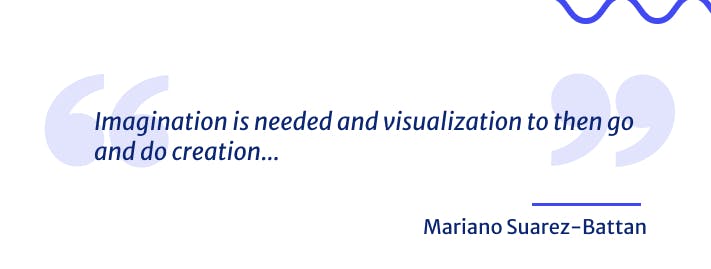
And then of course, designers and engineers can help you build a beautifully crafted, interactive experience that fulfills the original need.
Something that I joke about with my salespeople, we don’t sell tools. You want tools, go to Home Depot, right? There are a series of tools inside our software, it’s an online whiteboard, there are all sorts of features and also presentation superpower features to help you run the meetings. But ultimately what people tend to do is run through a workflow, but also improve how they do the workflow consistently after that.
So we believe that the only way to do that besides having the software is to introduce methodologies and templates for those methodologies. And on top of that, to be honest with you, and interaction with some sort of expert or coach helps them practice. Facilitators on-demand or folks like you and your community that can be there for them to prepare for that workflow to happen, to run the meetings that need to happen for that workload to happen, and coach them along the way. Because it’s hard. It’s hard to run a good enough product strategy session or a good user feedback session or a design sprint. It’s not an easy workflow.
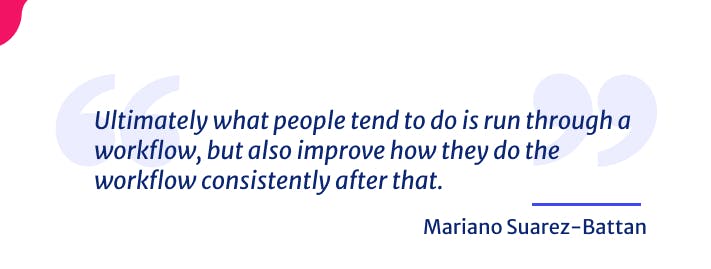
“How do you get bigger companies, where maybe not everyone is tech-savvy, to embrace this new way of collaborating?”
Well, last year they didn’t have an option, right? So they had to adapt really fast. And there was a lot of anxiety and people who were super nervous. So our support and customer success teams were helping people all the time. But then I think that the beautiful thing about this weird, global experiment that we went through, in some parts of the world that we’re still going through, it forced us to think about how we use time and how we design time. Even in the office, we’re not necessarily taking advantage of being around other people. If we are in the meeting, we’re not asking the right questions, remembering the right prompts, timeboxing to make sure that we wrap in time, evaluate the meeting and improve for the next one.
So I think that the nice thing that’s happened is that people are self-aware of how time is because they were feeling exhausted by talking to a screen multiple times per day and if not hours. We’ve seen a shrinking of time together and doing more synchronous work, people are starting to experiment with these things.
And the extra thing that is happening is people are trying things to solve these problems. Like, for example, ice-breaking exercises to open up meetings. I do this with my leadership team, asking how people are feeling when we open up a meeting because if someone has a headache or depression or going through some personal thing, it’s hard to expect a lot from that person in that event, and we can be tolerant with each other in that situation.
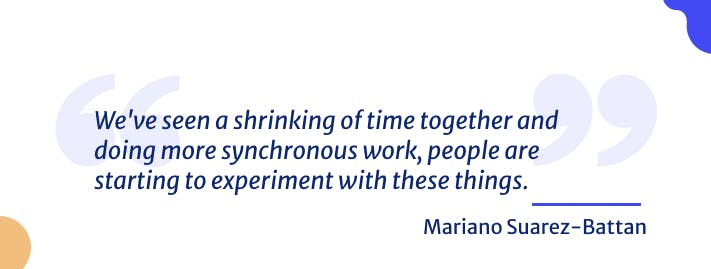
“How do you create trust in an environment where people can’t be physically in the same space?”
So of course we are human beings. We’ve got this virtual fireside chat right here, and ideally, we’d be together and we’d have some nice jamón, we’d cut some bread with tomato…that would be ideal. Or maybe not. Let’s ideally every once in a while.
So I always think of online guilds in games, like World of Warcraft or League of Legends and so forth, where people build relationships through these games and they build trust. They have a common objective, they wipe their other teams out. And sometimes people don’t know their real names or their real faces, but there is a level of trust and support.
I truly believe in playing scripted, guided games, a series of prompts, questions, or activities. I would also encourage you to design the meeting so that not only the extroverts can socialize with each other, but also introverts. Maybe have a prompt or a moment in which you’re guiding the conversation so that people don’t need to make small talk in order to get to know someone new.
It’s about designing the game that is your meeting.
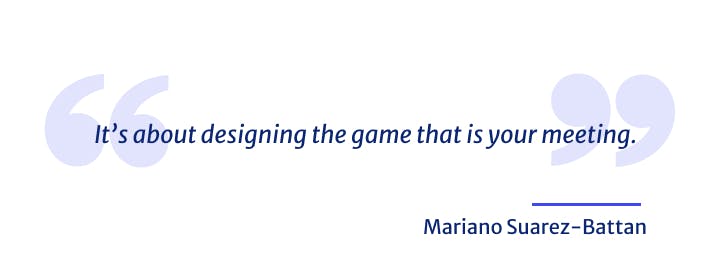
“At MURAL, you’re part of the Unicorn Club. Can you share with us the status of your company?”
We’ve been fortunate to be in a position that we were already ready to support large enterprises in deploying this new way of working. Right before the pandemic, we had IBM as a big customer, we did a total economic income report with them in February 2018. They’ve been a customer for a lot of years already, along with many others that we’ve shared on our website.
So we already prepared for this. This is not new for us. The only thing that happens, like it’s big all of a sudden, right? So the deployments are bigger…everybody needed it in some shape or form.
The last year has been intense and yeah, we’ve had people from all around the world. We like to hire people that are mission and culture-aligned. So in general, we call it an adaptable and growing culture. It’s working well, but that’s not the point. The point is that we have a lot of very happy customers, tens of thousands of people in our biggest customer. That means that it’s not just product managers, it’s not just designers. It’s people in different parts of the organization that want to think like a designer, that wants to think like a product manager, and it introduces methodologies to run their businesses.
The other day I was talking to our Head of Legal and (she’s doing a lot of things as you can imagine) and I told her, hold on, why don’t you think about legal as a product. That you have certain features like you can deliver three contract reviews per day. The feature is that the system doesn’t allow more for that, or no, you cannot hire people in this other country. It’s a feature like it’s a level of service. If we don’t have that level of service, maybe we can plugin an integration.
“Are you saying that attorneys are using MURAL cause that just blew up my mind!”
Yeah, I received a note from someone at a very large consumer packaged goods (great chocolates and coffee), a procurement guy tells me, I’m in love with MURAL, I run workshops with a hundred people procurement in India.
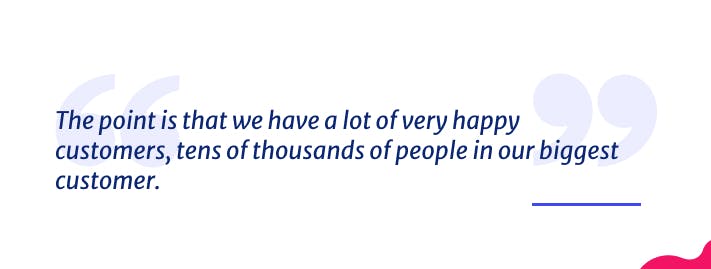
“What does next year look like for the future of work?”
We support remote work of course, but the type of remote work that we support is a particular type. So we don’t do, I don’t know, video calling. We don’t do task management, we don’t do chat. Right? So there are many components to the tooling around the digital workplace. And there have been many predictions for that.
And probably the biggest ones, digital-first is here to stay. Why? Because it was already here before. I mean, especially large companies, they all had people in different offices, and they were working digitally. But that’s very hard to do because there’s a lot of trust-building to be done around strategy, planning, innovation, team reflection, team building, customer engagements.
They were able to do these very intimate customer engagements remotely, and deploy that money, give it back to their customers, or whatever. Savings in D&E put them into more services.
So the point is, people got confident that they can do a lot of this work remotely. And there are some others that did not last year. For them, it might take a little more time, but we will end up there. Why? Because they’re going to go to workshops, and one key team member won’t be able to be there. They’ll say, “We should have done this in a digital format. So and so, they’ve had this issue with their kids, couldn’t participate, and now we have to do a re-do a week from now.” So the malleability, the resiliency that digital gives you…why would you give that away?
It’s not about the resiliency, it’s not about the synchronicities, it’s not about using time more effectively so that when you get into the together time, you don’t need eight hours of work because some work has been done before the session. Like when the flipped classroom in schools was invented, where you read by yourself or yourself, and then you take advantage of project work where you get together.
It’s not just about that. It’s about doing better. Like following the game. Because someone has spent the time to design a good game, and just play the game. And then you can tweak the game to work in your favor, right? Because each team has its own particularities.
In my opinion, this is the first one, digital-first won’t go away. Being synchronous will be as important as asynchronous work. And the one that I care the most about is best practices coined as games, methods that are common in design being deployed company-wide.
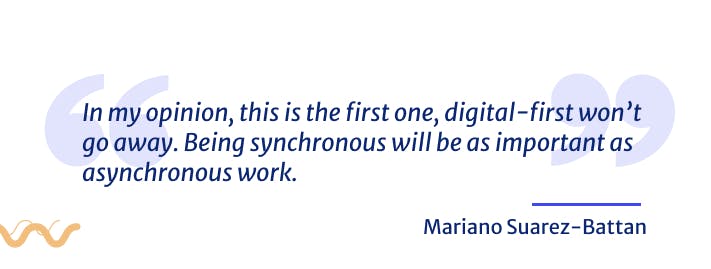
“How do you go about not just building a product, but integrating with others?”
As I said, there’s a tooling component and there’s synchronicity. For digital-first, you need a bunch of software to work together. So work management, video chat, and it needs to be all there.
It can be stitched together, synchronic, and asynchronous…with multiple people doing solo work. That combination of things that need to happen to accomplish a workflow. You don’t do strategic planning just in a second, right? If there are people preparing data, there’s a report, for that report there’s divergence, convergence…And then when to communicate the thing to the rest of the company. So it’s a long thing. It’s not just planning, but planning and sharing and reviewing and so forth. So all of that, there’s a set of tooling that needs to get better.
And we are investing super hard on getting better at integrating with…Zoom, Microsoft Teams, Slack as an investor, and so forth. There’s JIRA, so there’s many things on the software tooling side, but the most important one, to be honest with you, it’s the people with the games. We can call them Game Masters or Playmakers, like Dungeons and Dragons.
So the integration with a community that has the games and has the community and the people that run the games. That’s super important. So I’m looking forward to getting feedback from people on the collaboration that we (MURAL and Product School) are doing.
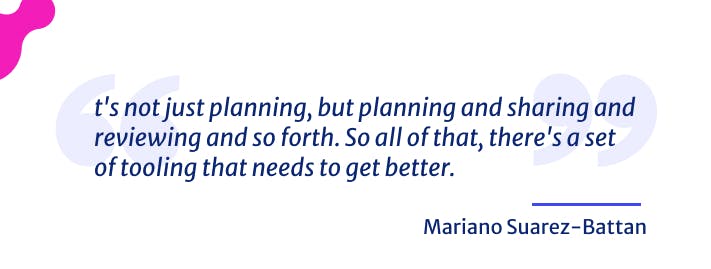
Hope you enjoyed today’s episode! Make sure to come back again next week for another special episode with Product CEOs.
Listen to our episodes on your favorite platform
Stay tuned for new episodes
By sharing your email, you agree to our Privacy Policy and Terms of Service

